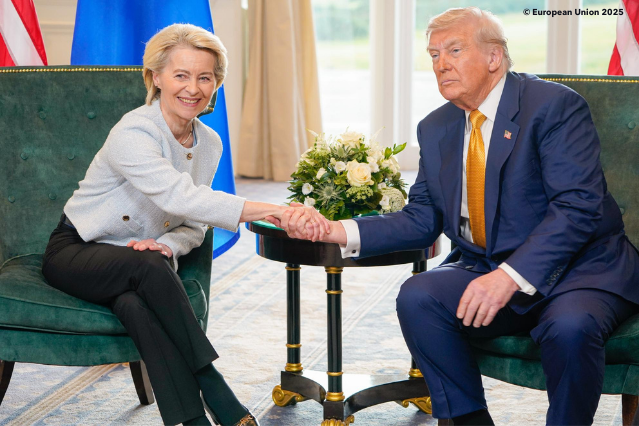
On 27 July, the European Union struck a long-awaited trade deal with the United States (US) after months on the brink of a trade war. Under the agreement, the US will impose a 15% import tariff on most EU goods – lower than the threatened 30%, but higher than the 10% secured by the United Kingdom.
As part of the deal, the EU pledged to invest around $750 billion (approximately €700 billion) in US energy over the next three years, as well as in military equipment, and committed to purchasing €40 billion worth of AI chips. The EU also agreed to ease non-tariff barriers for American cars and certain agricultural products.
Many observers criticised the agreement as unbalanced and highly favourable to the US, far from the zero-for-zero tariff outcome initially sought. European Commission President Ursula von der Leyen nevertheless maintained that the 15% tariff was the best result the EU could achieve.
Covering a wide range of sectors, the new tariff will replace the existing 25% duty on cars and car parts and will also apply to semiconductors and pharmaceuticals. Yet some strategic products remain excluded: the 50% tariff on steel and aluminium stays in place. By contrast, zero tariffs will apply to aircraft and aircraft parts, certain chemicals, generic medicines, semiconductor equipment, selected agricultural goods, natural resources and critical raw materials.
Under the energy arrangement, the EU committed to spending an average of $250 billion annually for three years – more than triple the $76 billion imported in 2024 in the form of US oil, liquefied natural gas (LNG) and solid fuels. This comes as European demand for fossil fuels continues to decline with the transition towards clean energy. The Commission argues that the figure reflects both current imports of LNG, oil, nuclear fuel and fuel services, and projected volumes as the EU seeks to reduce dependence on Russian supplies.
The EU executive also insists that the deal is compatible with the Green Deal and the Union’s decarbonisation goals, a claim widely contested by, among others, environmental groups. Many observers have also noted that, given that the US is already the EU’s largest supplier of LNG and oil, other suppliers, such as Norway, could be directly affected by the deal. Concerns have also been raised about whether the EU has sufficient LNG infrastructure to handle such volumes, and whether US export capacity can meet the demand. Moreover, since the EU cannot legally oblige companies to purchase oil and gas from the US, the Commission may not be able to guarantee the promised imports. Much of the deal therefore remains uncertain, as its practical implementation has yet to be clarified.